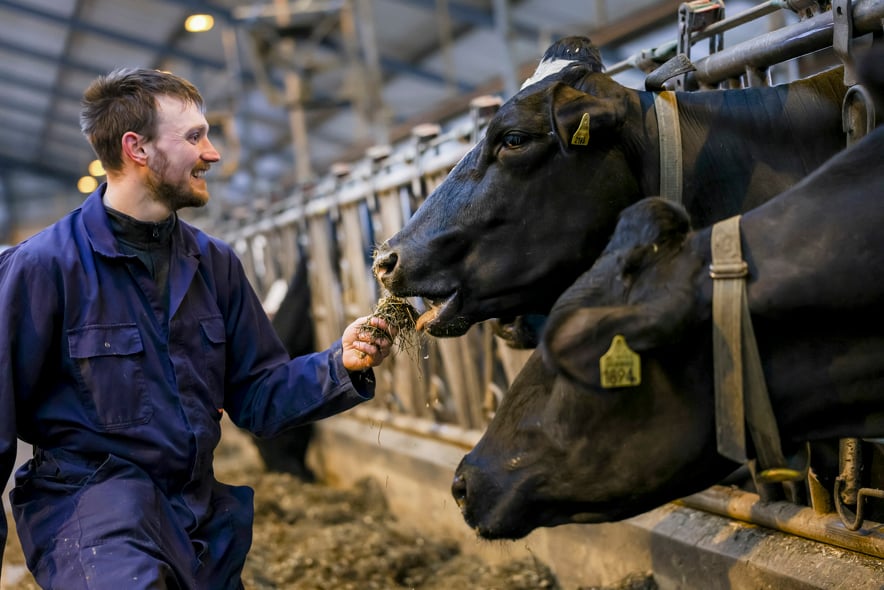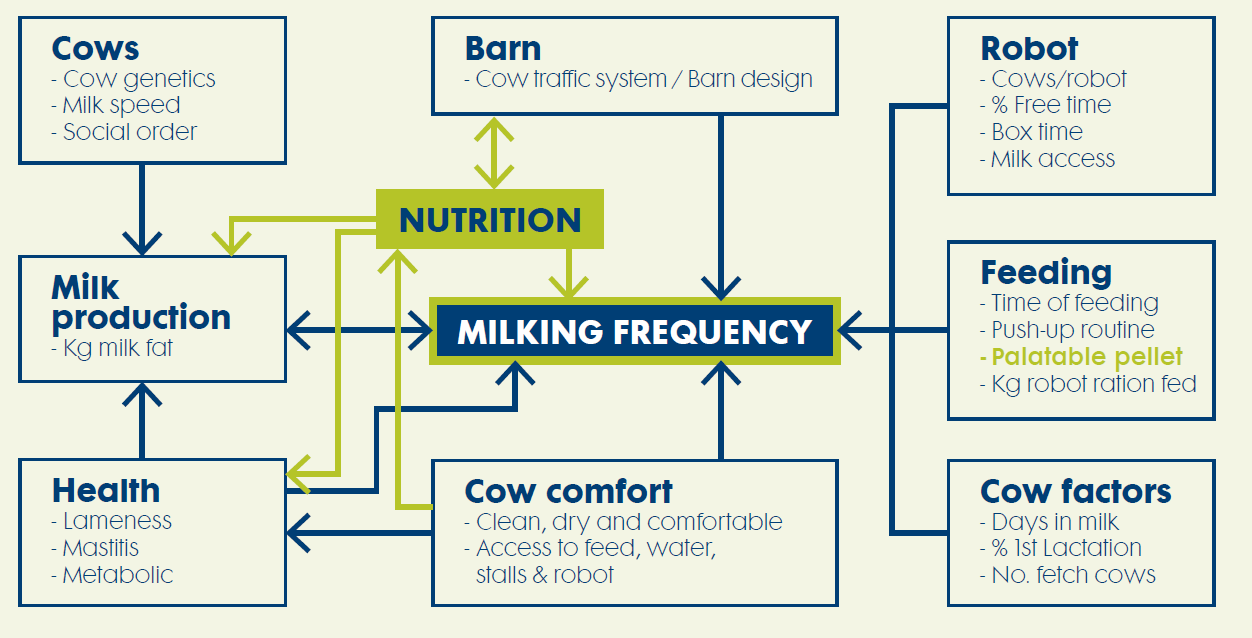Turn Your Ration into a Feast
- Dairy
Robot feeding strategies often focus on the amount of pellet offered, the nutrients in the feed bunk (Partial mixed ration or PMR) and the impact on robot visits. Too often we forget about the cow’s motivation to choose to go to be milked.

Several factors influence the cows’ visits to the robot (Figure 1). Focusing on motivation, nutrition plays a role in:
- Satiety
- Preference to visit the robot
- Milk production
We frequently find the cow’s satiety from the PMR impacts her desire to visit the robot, and therefore her ability to consume pellets. Any animal training program includes a reward for the animal exhibiting the desired behaviour. The continual encouragement for cows to freely visit the robot is no different.

The cows’ wish to be milked is normally not strong enough to obtain an optimal visit frequency; therefore, concentrate feeding is often used as a reward in the AMS. However, for the concentrate to work as a reward it is essential that the palatability is good.
Palatability of the pellet is influenced by the ingredients and texture of the feed. Herds that have tried mash feeds at the robot tend to return to a commercial pellet (Salfer and Endres, 2016). Rodenburg and Wheeler (2002) identified that a high durability pellet resulted in more voluntary visits and higher milk production. When there are too many fines, or inconsistent grind size found in a mash/textured product, calibration of the robot concentrate is challenging.
Pellet quality is not just about durability. High producing cows are usually fed more concentrate than lower producers. Meeting the nutritional needs of these top producers requires a pellet which is of higher nutritional density than the PMR. This not only supports the performance and health of these cows but also the producer’s financial performance.
Small amounts of quality robot concentrates can effectively be used to motivate cows into the robot. This allows the nutritionist to provide more nutrients at the bunk where it is most cost-effective in the total feed program.